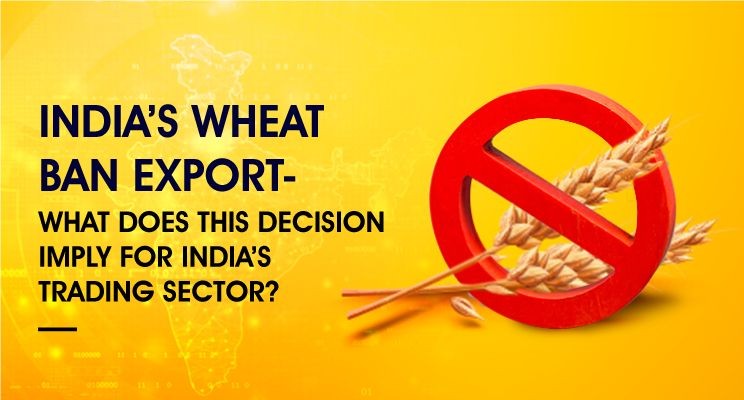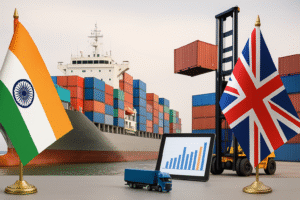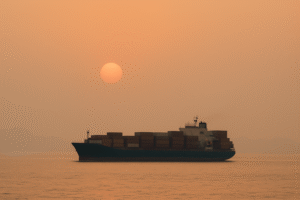
India’s wheat ban is causing a dilemma. It aims to meet domestic demands but could hurt Indian trade. Read on.
India’s wheat export ban — The story so far
India is the world’s second-largest wheat producer. However, it contributes to less than 1% of the international wheat trade. The government retains a major share of the wheat stocks to feed the poor at subsidized rates. Over the years, we have increased our export of the grain. In FY 22, India exported a record 7.85 million tonnes of wheat — a 270% jump over the previous year. This year, while Russia (the largest exporter of wheat) was busy invading Ukraine (one of the major wheat exporters) and hindered its global trade, the world looked upon India. And, the government laid out plans to aid global food security. It made plans to export a record 10 million tonnes of wheat this year.
On May 13, the government took a decision that gave ripples to the world at large. It ordered a ban on the export of wheat with immediate effect.
Why did India impose a ban on wheat export?
India witnessed a drastic heatwave this year. March was the hottest in 122 years, damaging hundreds of acres of wheat crops. This year’s yield may barely cross the 100 million tons mark, much down from the initial estimate of a record 111 million-ton harvest.

India’s wheat production (2012-2022)
Additionally, the wheat stock in the granaries of the Food Corporation of India is also low. These stocks may reduce further if the government extends its free grain programme.
“Controlling wheat exports by India, given uncertainties related to the crop size, the grain procurement program, the war, high fertilizer costs and extreme weather in other growing nations, is a logical move to ensure domestic availability and manage inflation.”
Managing director and Chief Executive Officer
National Commodities Management Services Ltd. — A warehousing and trading company.
What is the impact of the wheat ban internationally?
India’s wheat ban unsettled global markets. The Chicago benchmark wheat index rose by nearly 6%. India’s wheat ban led to a further price surge, as global buyers were depending on India after exports from the Black Sea region were reduced. The prices of some of the key wheat types rose for several days and peaked on 17-18 May.

Rising wheat prices globally
“The world is starting to get very short of wheat. At present, the US winter wheat is in poor condition, France’s supplies are drying out and Ukraine’s exports are stymied. We now have an environment with another supplier removed from contention in global trade flows.”
A grains analyst at Melbourne-based Thomas Elder Markets,
The government responded that its export ban is flexible. It will consider on a case by case basis requests from neighbouring countries and vulnerable countries that are plagued with food emergencies. Furthermore, it added that if wheat prices come down, it could reconsider the ban. However, Mr. Chaudhry from National Commodities Management Services Ltd. opines that minimum export price and quantitative restrictions could have been more optimal measures in comparison to a sudden ban.
The government’s decision challenges trade impacts the credibility of the Indian exporters and hits the farmers’ earning potential.
Will the wheat ban damage our global trade?
A] Heavy losses
The wheat export ban has caused heavy losses to the traders. They will now be compelled to sell the grain to a weaker domestic market that has been subject to the pressure of a fresh price ever since the ban. The traders will need to bear the brunt of paying the reloading and transport costs. The abrupt ban will make it tougher for them to sell the wheat stocks lying at the ports profitably.
India’s shocking wheat export ban has trapped 1.8 million tonnes of wheat at ports. Post-order, nearly 1.4 million tonnes were stuck at Mundra and Kandla or in transit. As of May 17, there were over 4,000 wheat-laden trucks stuck. Inside, there were four ships, half loaded with wheat and no order to sail. 8 lac tonnes of wheat were stuck at Kakinada, Tuticorin and Visakhapatnam.
B] Declaration of force majeure
Only exports backed by letters of credit (LCs) or payment guarantees issued before May 13 have got the green signal for export from the government. As per a news article published in The Economic Times, traders have LCs for only 400,000 tonnes of 2.2 million tonnes of wheat currently at ports or in transit. Exporters purchased wheat and moved it to the ports. They are left with no option but to declare force majeure on shipments to overseas customers.

C] Impact on global trading houses
Wheat exports have always been profitable. The government’s promise of strong export demand encouraged exports of at least 8-10 million tonnes. The trading companies planned to ship as much wheat as possible before the onset of monsoon as crop movement becomes challenging once the rainy season commences. Many of the global trading companies’ subsidiaries sold wheat to their regional headquarters offshore before securing the necessary LCs.
D] Panic rice exports
The sudden wheat ban has set a wave of panic among rice traders. They have begun to increase purchases and place unusual orders for longer-dated deliveries. A news article from The Economic Times states that traders have signed contracts to export 1 million tonnes of rice for shipments from June through September. They are opening LCs quickly after signing deals to ensure the contracted quantity will be sent even if India restricts exports. Such aggressive purchases from India hold the possibility of reducing rice demand from Vietnam and Thailand — the world’s second and third-biggest rice exporters respectively. Indian rice offers a price advantage. It is over 30% cheaper than that of international destinations.
What lies ahead?
In the current globalised market, it is evident that events in one country could have a domino effect worldwide. India’s wheat export ban has reverberated through agricultural markets around the world despite the country not being a significant global wheat exporter. The reports reveal just how tight the global supplies are owing to the Russia-Ukraine war and climate change, spiralling up the food prices even more.
But another thought looms amidst this situation — Could India work on its climate mitigation programmes and leverage its potential to feed the world in the times to come? Because if it is indeed possible, then it would not only spell growth in foreign revenue earnings owing to international trade but also lead to adequate income growth for farmers.







